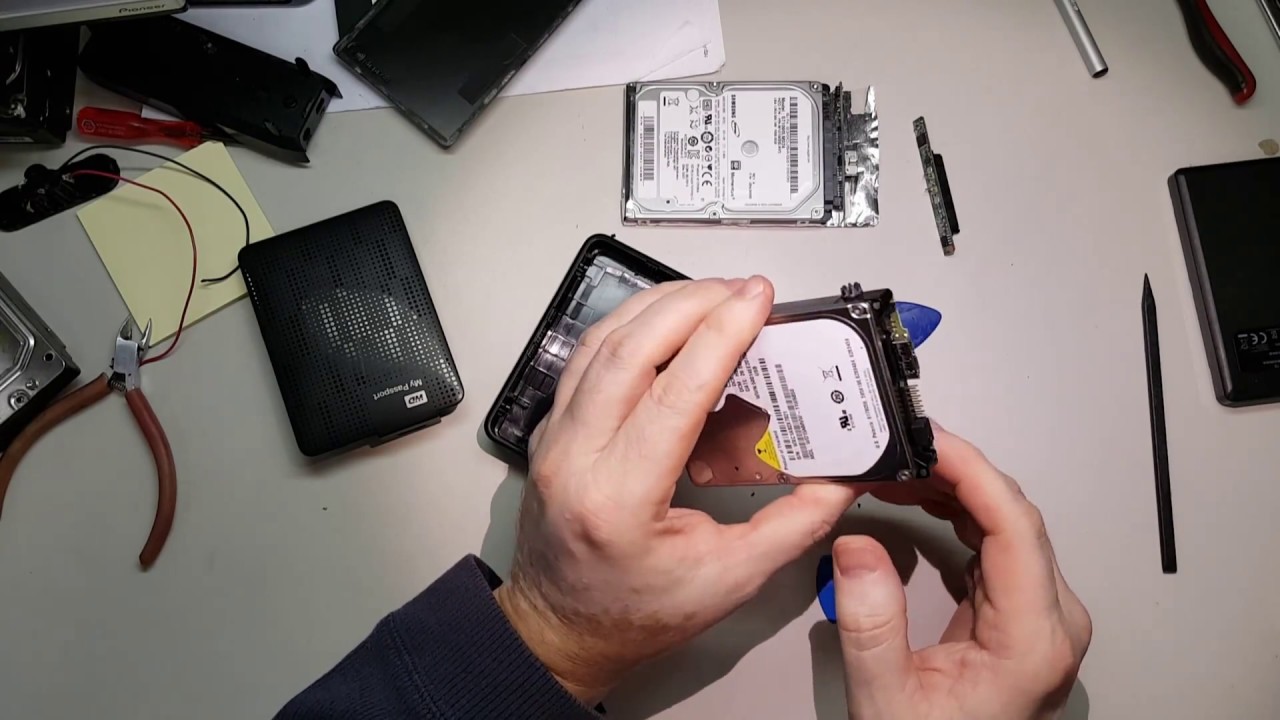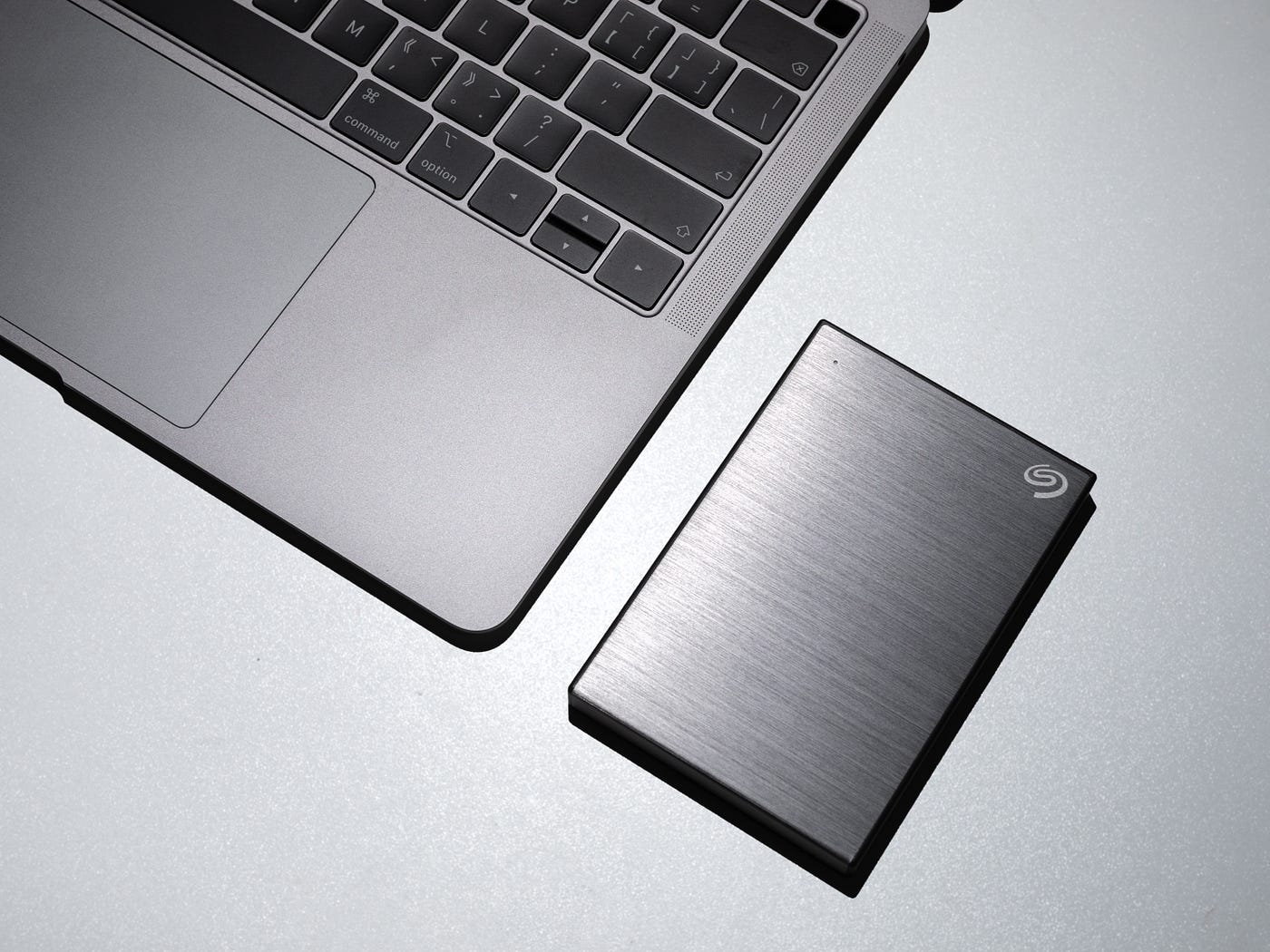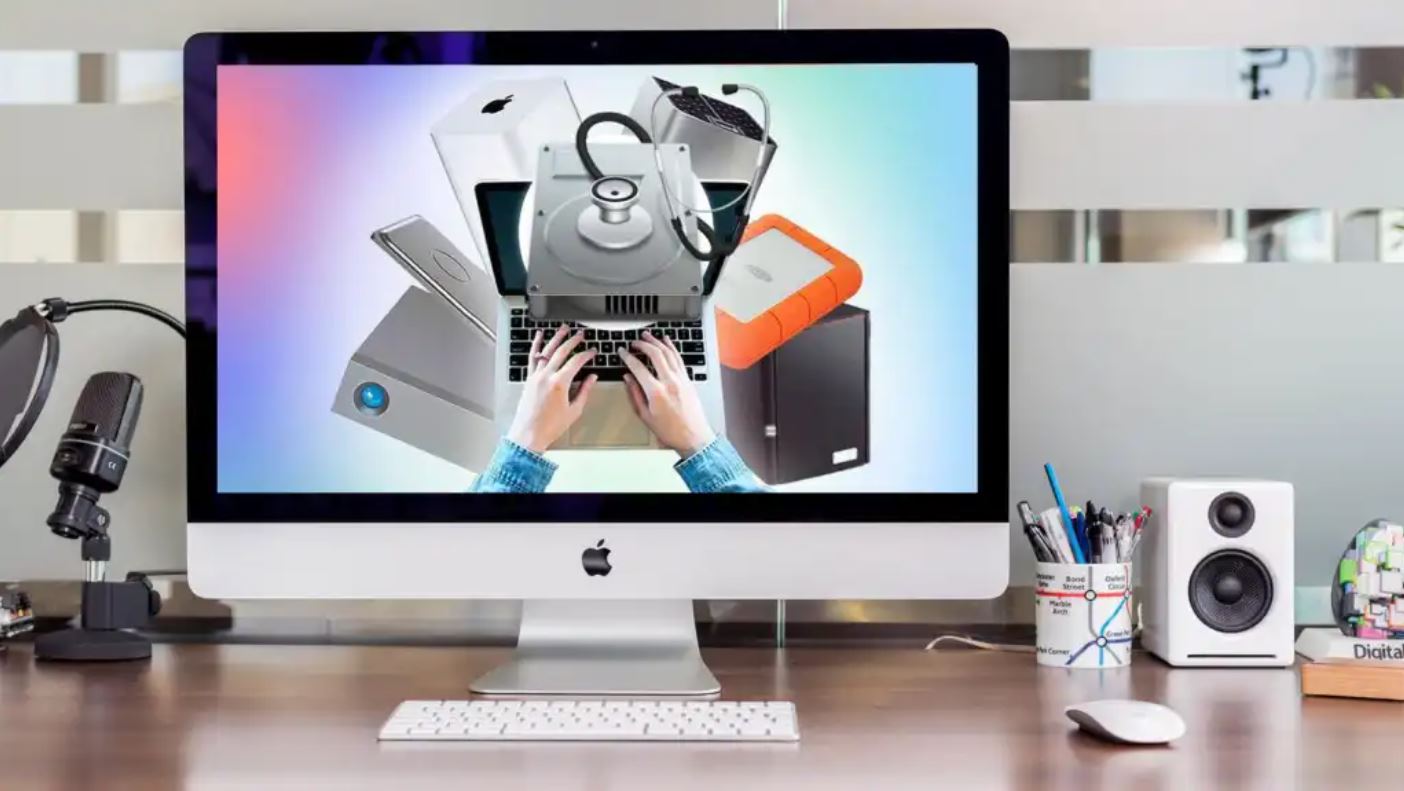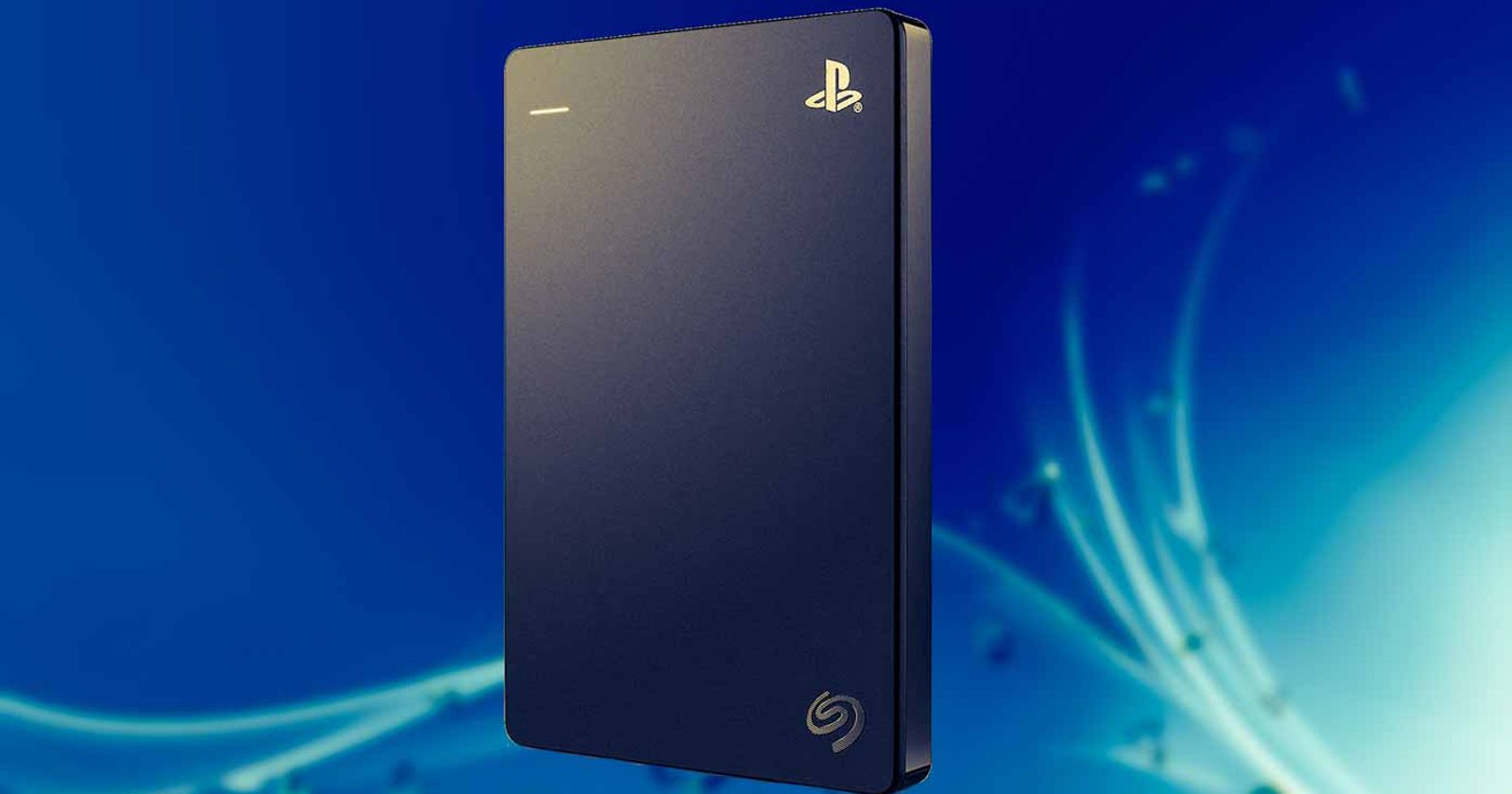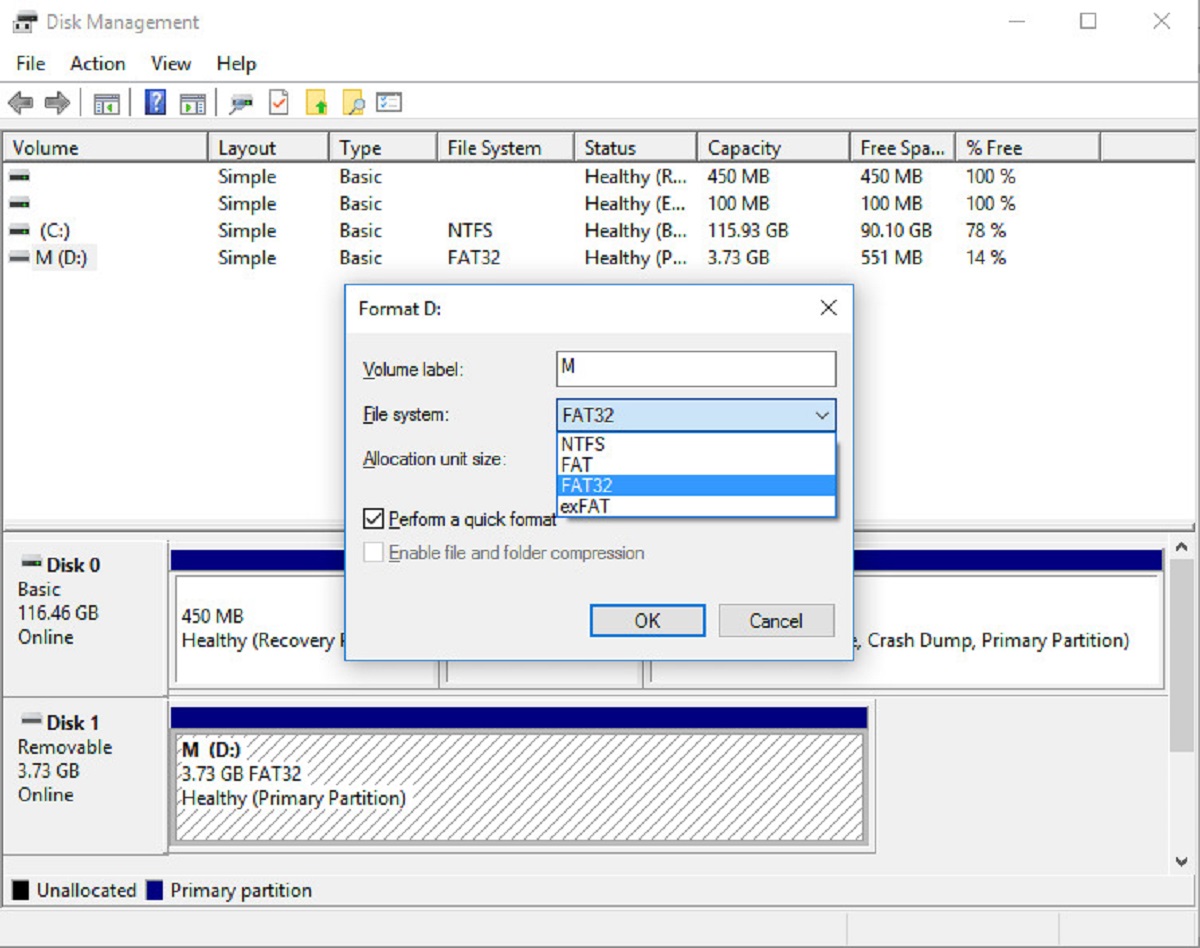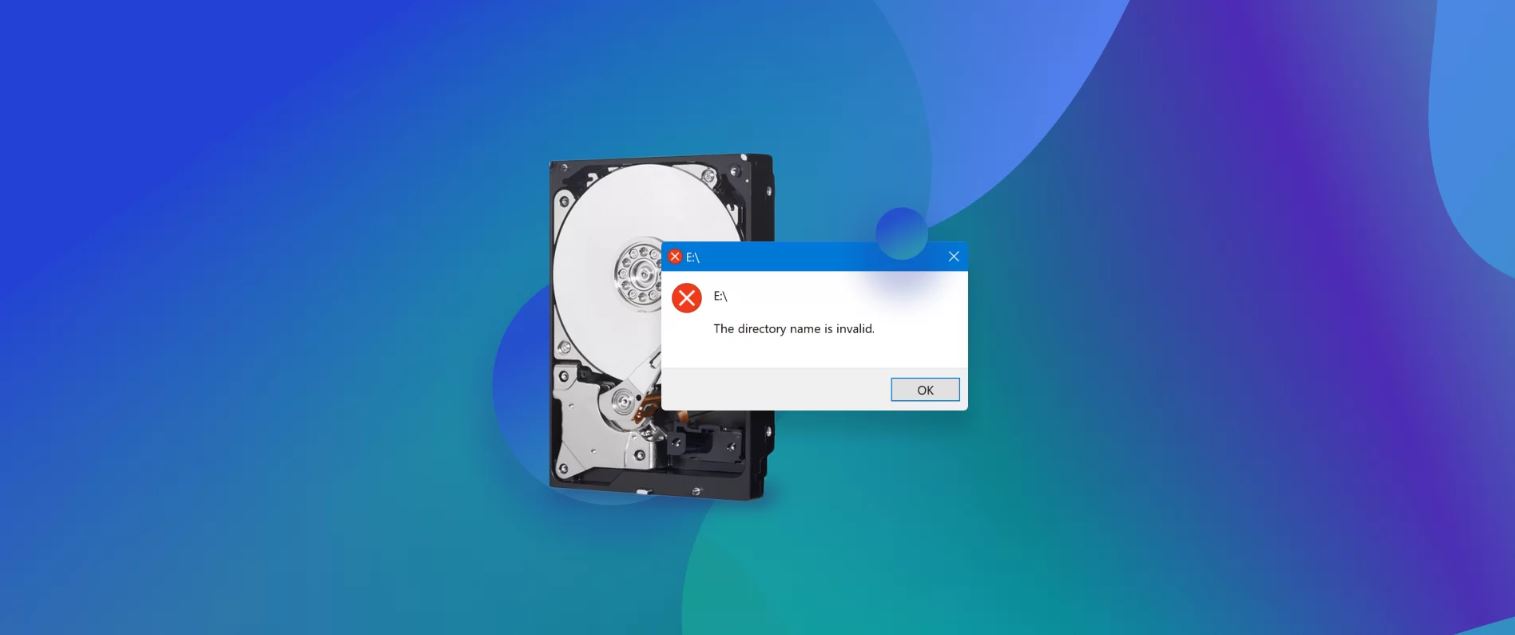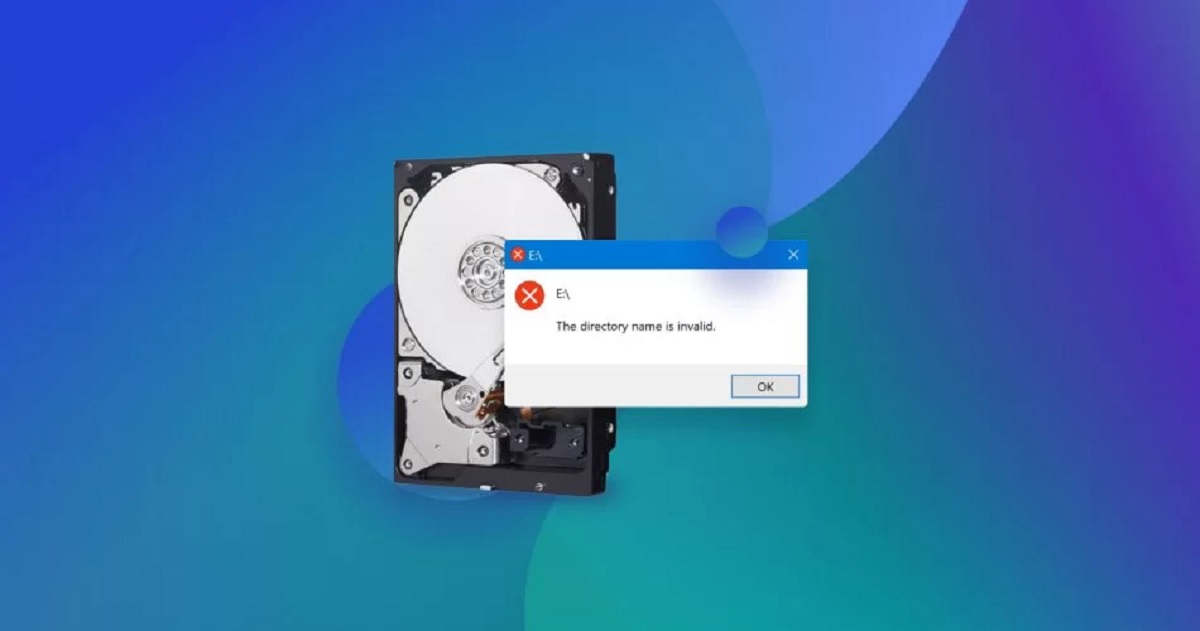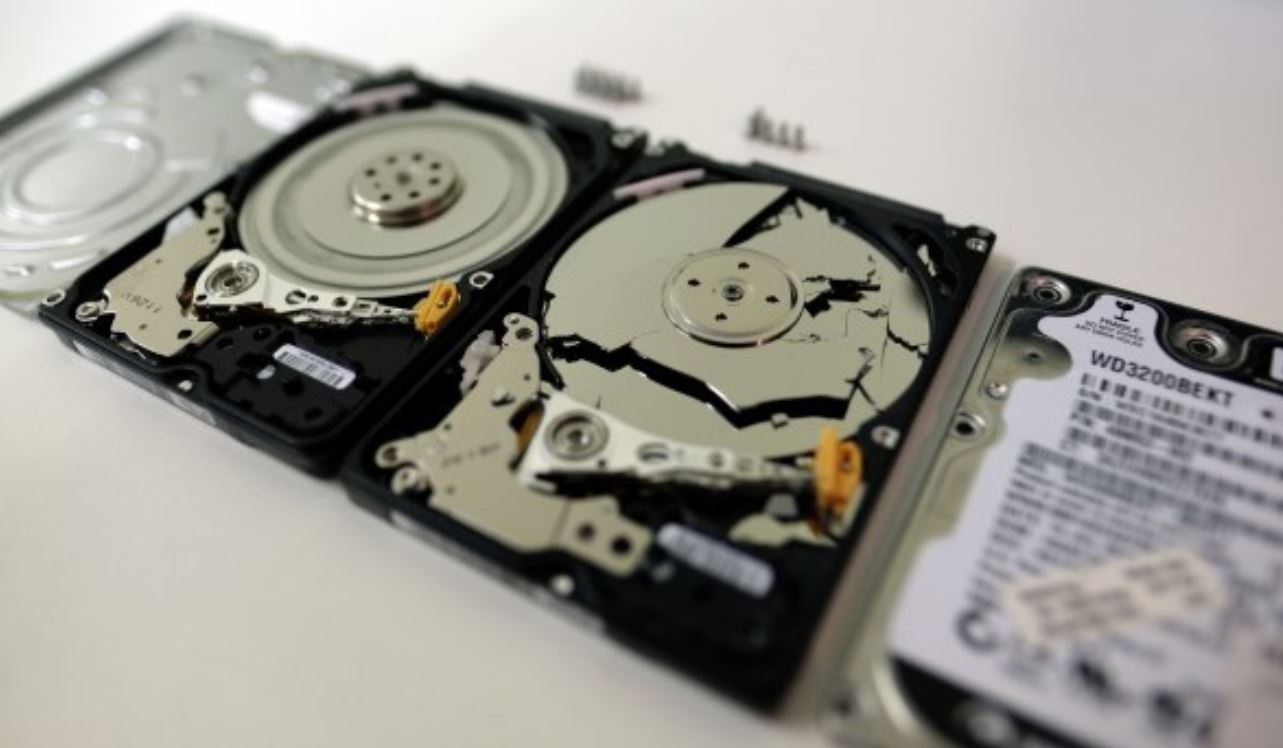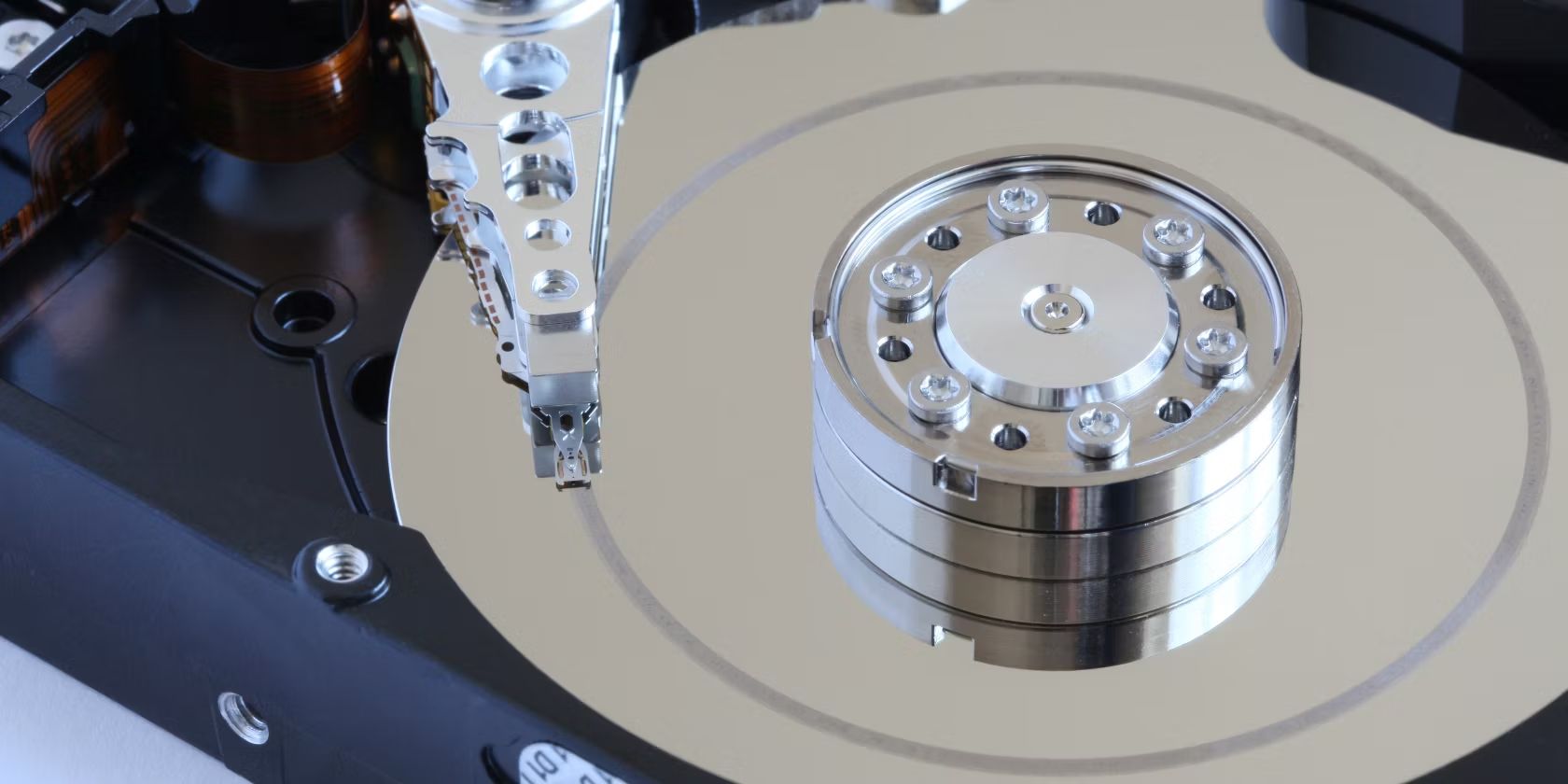Introduction
When it comes to storing important files and data, many people rely on external hard drives for their convenience and reliability. However, accidents happen, and a dropped external hard drive can cause panic and worry. The impact from the fall can potentially lead to physical damage or result in logical errors that prevent you from accessing your data.
But fret not! In this article, we will guide you through the process of repairing a dropped external hard drive. Whether it’s a minor issue that you can fix yourself or a more serious problem requiring professional assistance, we’ve got you covered.
Before we dive into the repair methods, it’s crucial to emphasize the importance of backing up your data regularly. Whether your external hard drive has suffered a drop or not, having a recent backup ensures that you don’t lose any vital information in case of damage or failure.
Now, let’s get started with assessing the damage and determining the necessary steps to repair your dropped external hard drive.
Assessing the Damage
After a drop, it’s essential to carefully assess the damage to your external hard drive before attempting any repairs. This step will help you understand the extent of the problem and decide the appropriate course of action.
Start by examining the external hard drive visually. Look for any noticeable physical damage, such as dents, cracks, or loose components. If you see any signs of significant damage, it’s best to seek professional help to prevent further harm and data loss.
Next, try connecting the external hard drive to your computer and see if it is recognized. If your computer detects the device but you can’t access the data, there may be logical errors that need to be addressed. On the other hand, if the computer fails to recognize the device altogether, there may be a connection issue or more serious internal damage.
During this assessment process, it’s important to listen for any unusual sounds coming from the external hard drive. Clicking, grinding, or buzzing noises can indicate mechanical problems and should not be ignored. If you hear any unusual sounds, it’s best to stop using the device immediately and seek professional assistance.
Remember to document your observations during the assessment process. Taking photos of any physical damage and noting down any error messages or abnormal behaviors will be helpful when seeking professional assistance or troubleshooting the issue on your own.
By thoroughly assessing the damage, you will have a clearer understanding of the problem and be better prepared to take the appropriate steps towards repairing your dropped external hard drive.
Backing Up Your Data
Before attempting any repairs on your dropped external hard drive, it is crucial to prioritize data backup. This step ensures that even if the repair attempts fail or worsen the situation, you won’t lose your valuable files and information.
If your external hard drive is still accessible and functioning properly, take this opportunity to back up your data immediately. Connect the device to your computer and transfer all important files to a separate storage location, such as another external hard drive, a cloud storage service, or your computer’s internal storage.
If your external hard drive is not recognized or cannot be accessed due to logical errors, try using data recovery software. There are numerous reliable programs available online that can help retrieve lost or inaccessible data. Follow the instructions provided by the software to scan your external hard drive and recover the important files.
If the physical damage is preventing you from accessing your data, it’s important not to attempt any repairs yourself. Instead, consult a professional data recovery service. These experts have the tools and expertise to safely retrieve data from damaged external hard drives.
Remember, the goal here is to safeguard your data before proceeding with any repairs. Losing important files can be devastating, so taking the time to back up your data is a crucial step in the repair process.
Once you have successfully backed up your data, you can proceed with the repair methods to fix your dropped external hard drive, knowing that your valuable information is safe and secure.
Inspecting the External Hard Drive
After ensuring your data is safely backed up, it’s time to inspect the external hard drive itself. This step will help you identify any visible physical damage and determine if it’s something you can fix on your own or if professional help is required.
Start by carefully examining the external casing for any visible cracks, dents, or loose parts. Look for any signs of damage or misalignment that could have occurred as a result of the drop. Additionally, check the USB or power cable connectors for any bent or broken pins.
If you notice minor physical damage like scratches or small dents, it may not significantly affect the functioning of the external hard drive. However, if there are significant cracks or loose parts, it’s best to consult a professional technician or the manufacturer for repair options.
Next, remove the external hard drive from its casing if possible. Be cautious and follow any manufacturer instructions to avoid causing further damage. Once exposed, inspect the internal components for any signs of damage, such as loose cables or dislodged connectors.
It’s worth noting that disassembling the external hard drive is a delicate process and should only be attempted if you feel comfortable and have experience with electronics. If you’re unsure or have any hesitations, it’s best to seek professional assistance to prevent causing irreparable damage.
During the inspection, also check for any signs of liquid damage. If the external hard drive was exposed to water or any other liquid after being dropped, it may need specialized treatment to prevent further corrosion or electrical issues.
By thoroughly inspecting the external hard drive for physical damage, you can better determine the appropriate next steps. While minor issues like scratches may be manageable for DIY repairs, more significant damage may require the expertise of professionals.
Fixing Physical Damage
If you have identified physical damage on your dropped external hard drive, there are a few steps you can take to attempt repairs. However, it is important to note that these methods should only be pursued if you feel confident and have experience working with electronics. Otherwise, it’s advisable to seek professional help to avoid causing further damage.
One common issue with physical damage is a loose connection. In this case, you can try reseating the cables or connectors on the external hard drive. Carefully disconnect and reconnect each cable, ensuring they are securely fitted into their respective ports. You can also try using a different USB or power cable to rule out any issues with the existing cables.
If you notice a cracked casing, you may be able to repair it with epoxy or super glue. Before attempting any repairs, make sure to clean the area thoroughly and remove any debris. Apply a small amount of epoxy or glue to the cracked area, following the manufacturer’s instructions. Be cautious not to use excessive adhesive, as it can interfere with the device’s functionality or cause further damage.
For more significant physical damage, such as a dislodged component or a broken connector, it’s best to consult a professional technician or the manufacturer for repair options. They have the knowledge and tools necessary to safely address these issues without risking further damage.
Keep in mind that attempting DIY repairs on a physically damaged external hard drive carries risks. Mishandling delicate components or using improper techniques can worsen the damage or render the device irreparable. If you are unsure or uncomfortable with the repair process, it’s better to seek professional assistance.
Remember, your primary goal is to recover the data stored on the external hard drive. If your repair attempts are unsuccessful or if you’re not confident in your ability to fix the physical damage, it’s crucial to prioritize data recovery. Seek professional help from a reputable data recovery service to ensure the safe retrieval of your valuable files.
Resolving Logical Errors
If you’re experiencing logical errors on your dropped external hard drive, there are several methods you can try to resolve them and regain access to your data. Logical errors are often caused by file system issues or corrupted data, rather than physical damage.
First, attempt to use data recovery software specifically designed to fix logical errors. These programs can scan and analyze the external hard drive, identify any corrupted files or file system errors, and attempt to repair them. Follow the instructions provided by the software and allow it to complete the process.
If the data recovery software fails to resolve the logical errors, you can try using built-in disk-checking tools provided by your operating system. For Windows users, you can use the “Error Checking” tool, while Mac users can utilize the “Disk Utility” application. These tools scan the external hard drive for errors and attempt to fix them automatically.
If the logical errors persist after running data recovery software and disk-checking tools, you may need to consider reformatting the external hard drive. Keep in mind that reformatting will erase all data on the drive, so only proceed with this step if you have a backup of your important files.
To reformat the external hard drive, connect it to your computer and open the disk management utility. Select the external hard drive and choose the option to format it. Follow the on-screen prompts to complete the process. Once the reformatting is complete, you can restore your data from the backup.
If none of the above methods successfully resolve the logical errors, it’s advisable to seek professional assistance. Data recovery professionals have specialized tools and techniques to handle complex logical errors and recover data from damaged external hard drives.
Remember, logical errors are typically not caused by physical damage, so attempting to fix them yourself is generally safe. However, it’s crucial to have a backup of your data and exercise caution throughout the repair process.
Troubleshooting Connection Issues
If you’re facing connection issues with your dropped external hard drive, there are a few troubleshooting steps you can take to determine the underlying problem and resolve it.
First, try connecting the external hard drive to a different USB port on your computer. Sometimes, a faulty USB port can prevent proper communication between the device and the computer. By switching to a different port, you can rule out any issues with the specific USB port you were initially using.
If changing the USB port doesn’t resolve the issue, try using a different USB cable. A faulty or damaged cable can impede the connection between the external hard drive and the computer. Replace the cable with a known working one to see if it makes a difference.
Ensure that the USB cable is securely connected at both ends. Loose or partially inserted cables can cause connection problems. Gently disconnect and reconnect the USB cable, making sure it is inserted fully into both the external hard drive and the computer.
In some cases, a driver issue may be preventing the external hard drive from being recognized by your computer. Open your device manager and check if there are any yellow exclamation marks or error icons next to the external hard drive. If so, right-click on the device and select “Update Driver” to download and install the latest driver software.
If none of the above steps resolve the connection issue, it’s worth trying the external hard drive on a different computer. This will help determine if the problem lies with your computer or the external hard drive itself. If the device works on another computer, it may indicate a compatibility or driver issue with your original computer.
In some cases, connection issues may be caused by a power supply problem. Ensure that the external hard drive is receiving adequate power. Some external hard drives require an external power source, so make sure it is connected and functioning properly.
If you have tried all these troubleshooting steps without success, it’s time to consider seeking professional help. Professional technicians have the expertise and tools to diagnose and fix complex connection issues with external hard drives.
Remember, troubleshooting connection issues requires patience and methodical steps. By following these steps, you can identify and resolve the underlying problem, allowing your dropped external hard drive to connect successfully to your computer.
Seeking Professional Help
If you have exhausted all the DIY repair methods or if you are unsure about attempting repairs on your dropped external hard drive, it is time to consider seeking professional help. Professional technicians have the experience, knowledge, and specialized tools to diagnose and repair both physical and logical issues with external hard drives.
When choosing a professional service, it is essential to look for reputable data recovery and repair companies. Consider factors such as their track record, customer reviews, and certifications. This will help ensure that your dropped external hard drive is in capable hands.
Professional technicians will conduct a thorough assessment of your external hard drive to determine the extent of the damage. They will utilize advanced techniques and tools to retrieve data from physically damaged drives, repair logical errors, or fix any other issues the device may have.
Additionally, seeking professional help reduces the risk of further damage that may occur from attempting repairs without the necessary expertise. They can diagnose and address underlying issues that may not be apparent to untrained individuals, providing you with the best chance of recovering your data.
Keep in mind that professional data recovery services can be costly, depending on the severity of the damage and the complexity of the repairs required. However, the investment is often worth it when it comes to retrieving valuable and irreplaceable data.
Furthermore, professional technicians can offer guidance and advice on data backup solutions and best practices to prevent future data loss. They can recommend and set up backup systems tailored to your specific needs, providing peace of mind and protecting your data from potential future incidents.
By seeking professional help, you can ensure that your dropped external hard drive is handled with care and expertise. Whether it’s a physical or logical issue, these professionals will work diligently to recover your data and restore the functionality of the device.
Conclusion
Dealing with a dropped external hard drive can be a stressful experience, but with the right approach, you can repair the damage and recover your valuable data. Assessing the damage, backing up your data, and inspecting the external hard drive are crucial initial steps to take. From there, you can attempt to fix any physical damage or address logical errors using appropriate methods and tools.
Remember, troubleshooting connection issues and seeking professional help are additional options if your DIY efforts are unsuccessful or if you’re unsure about attempting repairs yourself. Professional technicians have the expertise and specialized equipment to handle complex issues and effectively recover your data.
Throughout the process, it is important to prioritize the safety of your data by regularly backing it up. This ensures that even if the repair attempts fail or worsen the situation, your valuable files remain secure.
Repairing a dropped external hard drive may require patience, research, and possibly professional assistance, but it is worth the effort to retrieve your important data. By following the steps outlined in this article, you can increase the chances of successfully repairing your dropped external hard drive and regaining access to your files.
Remember, prevention is always better than cure. Take proactive measures to protect your external hard drive from drops and accidents in the future. Handle it with care, utilize protective cases, and regularly back up your data to minimize the impact of any potential damage.
With proper precautions and timely action, you can overcome the challenges of a dropped external hard drive and ensure the safety and accessibility of your valuable data for years to come.







